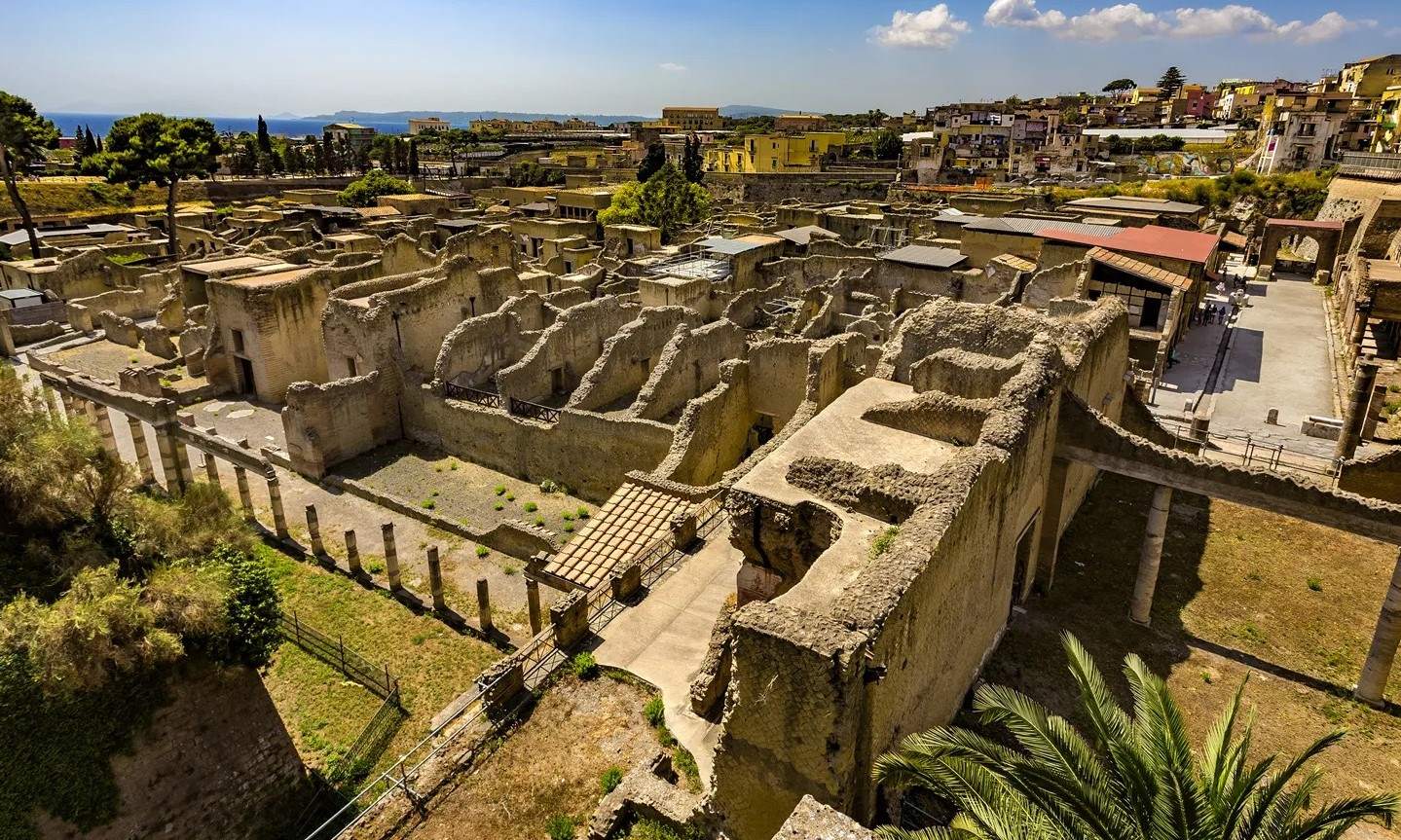
Herculaneum is an ancient Roman town located near modern-day Naples, Italy. It is often overshadowed by its more famous neighbor, Pompeii, which was also destroyed by the eruption of Mount Vesuvius in 79 AD. However, Herculaneum has its own unique story and offers a fascinating glimpse into the lives of its inhabitants before the catastrophic event.
In this article, we will uncover 8 intriguing facts about Herculaneum that will showcase its significance and make you appreciate the town’s rich history. From its astonishingly well-preserved buildings to its remarkable archaeological discoveries, Herculaneum has much to offer for history buffs and curious travelers alike. So, let’s dive into the mysteries of this ancient town and discover the hidden gems that lie within.
Key Takeaways:
- Herculaneum, a Roman town buried by Mount Vesuvius, offers a well-preserved glimpse into ancient Roman life, showcasing wealth, luxury, and advanced infrastructure, with ongoing archaeological discoveries.
- The excavation of Herculaneum has unearthed stunning frescoes, mosaics, and even a preserved ancient Roman boat, providing valuable insights into daily life and maritime trade during ancient times.
Herculaneum was an ancient Roman town.
Herculaneum, located in modern-day Italy, was once a thriving Roman town. It was situated close to Mount Vesuvius and was a popular seaside resort for the wealthy Romans.
The town was buried by the eruption of Mount Vesuvius.
In 79 AD, Mount Vesuvius erupted and covered Herculaneum and its neighboring town, Pompeii, in ash and volcanic debris. The town remained buried and forgotten for centuries until it was rediscovered in the 18th century.
Herculaneum offers a well-preserved glimpse into Roman life.
Unlike Pompeii, which was covered in ash and lapilli, Herculaneum was engulfed by a lahar, a mix of ash and volcanic mud. This unique preservation technique has allowed archaeologists to uncover a wealth of information about daily life in ancient Rome.
It was a town of wealth and luxury.
Herculaneum was primarily inhabited by the wealthy elite of Roman society. The town was adorned with opulent villas, beautiful frescoes, and intricate mosaics, showcasing the prosperity and sophistication of its residents.
The town had advanced systems of infrastructure.
Herculaneum boasted a sophisticated infrastructure system, including an ingenious sewage network and a well-developed water distribution system. The town’s advanced engineering marvels are a testament to the technological prowess of the ancient Romans.
Herculaneum is home to the only surviving ancient Roman boat.
During the excavation of Herculaneum, archaeologists discovered a preserved ancient Roman boat known as the “Hercules.” This extraordinary finding provides valuable insights into maritime trade and transportation during ancient times.
Artifacts found in Herculaneum include stunning frescoes and mosaics.
The excavation of Herculaneum has unearthed a treasure trove of stunning artwork, including vibrant frescoes and intricate mosaics. These artifacts depict scenes of daily life, mythical stories, and religious imagery that give us a glimpse into the artistic achievements of the ancient Romans.
It continues to be an ongoing archaeological site.
Herculaneum remains an active archaeological site to this day. Ongoing excavations and research continue to reveal new discoveries and shed light on the history and culture of this ancient Roman town.
Conclusion
Herculaneum is a captivating archaeological site that offers a unique glimpse into ancient Roman civilization. Through its stunning preserved ruins and artifacts, it tells the story of a bustling city that was abruptly frozen in time by the catastrophic eruption of Mount Vesuvius in 79 AD.
From its beautifully preserved frescoes to its intricate mosaics, Herculaneum has provided invaluable insights into the daily lives of its inhabitants. The city’s proximity to Pompeii and its status as a UNESCO World Heritage Site make it a must-visit destination for history enthusiasts and curious travelers alike. As ongoing excavations uncover new discoveries, the intrigue and fascination surrounding Herculaneum continue to grow.
Whether you are intrigued by ancient history, architecture, or simply enjoy exploring fascinating destinations, Herculaneum offers a truly unique and immersive experience that is sure to leave a lasting impression.
FAQs
Q: How was Herculaneum preserved so well?
A: Herculaneum was buried by a thick layer of volcanic material, including ash and pyroclastic flows, which preserved the city by sealing it off from the elements and preventing decay.
Q: Can you visit the preserved buildings in Herculaneum?
A: Yes, visitors to Herculaneum can explore the remarkably preserved buildings, including houses, shops, and public baths, which provide a unique insight into the daily life of its ancient inhabitants.
Q: How long does it take to visit Herculaneum?
A: The average visit to Herculaneum takes about 2-3 hours, depending on the level of exploration and interest in details. However, it is recommended to allocate at least half a day to fully appreciate the site.
Q: Is Herculaneum accessible for people with mobility issues?
A: While some areas of the site may pose challenges for those with mobility issues due to uneven terrain and stairs, there are accessible pathways that allow visitors to experience a significant portion of Herculaneum.
Q: Are there guided tours available at Herculaneum?
A: Yes, guided tours are available at Herculaneum, allowing visitors to gain in-depth knowledge and a better understanding of the history and significance of the site. These tours are led by knowledgeable guides who provide insightful commentary.
Herculaneum's captivating history leaves you yearning to explore more ancient wonders. Satisfy your curiosity by learning about the mighty volcano that sealed its fate. Unearth the astonishing truths behind Mount Vesuvius, the force of nature responsible for preserving this Roman town's treasures.
Was this page helpful?
Our commitment to delivering trustworthy and engaging content is at the heart of what we do. Each fact on our site is contributed by real users like you, bringing a wealth of diverse insights and information. To ensure the highest standards of accuracy and reliability, our dedicated editors meticulously review each submission. This process guarantees that the facts we share are not only fascinating but also credible. Trust in our commitment to quality and authenticity as you explore and learn with us.
